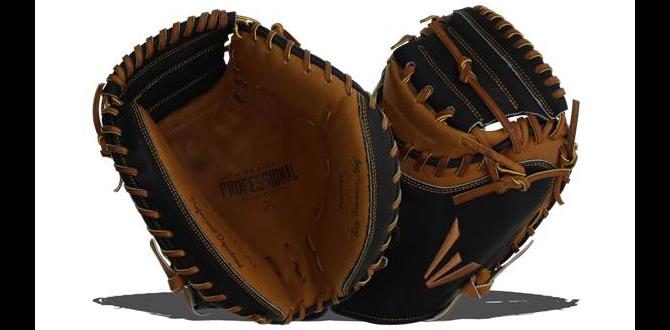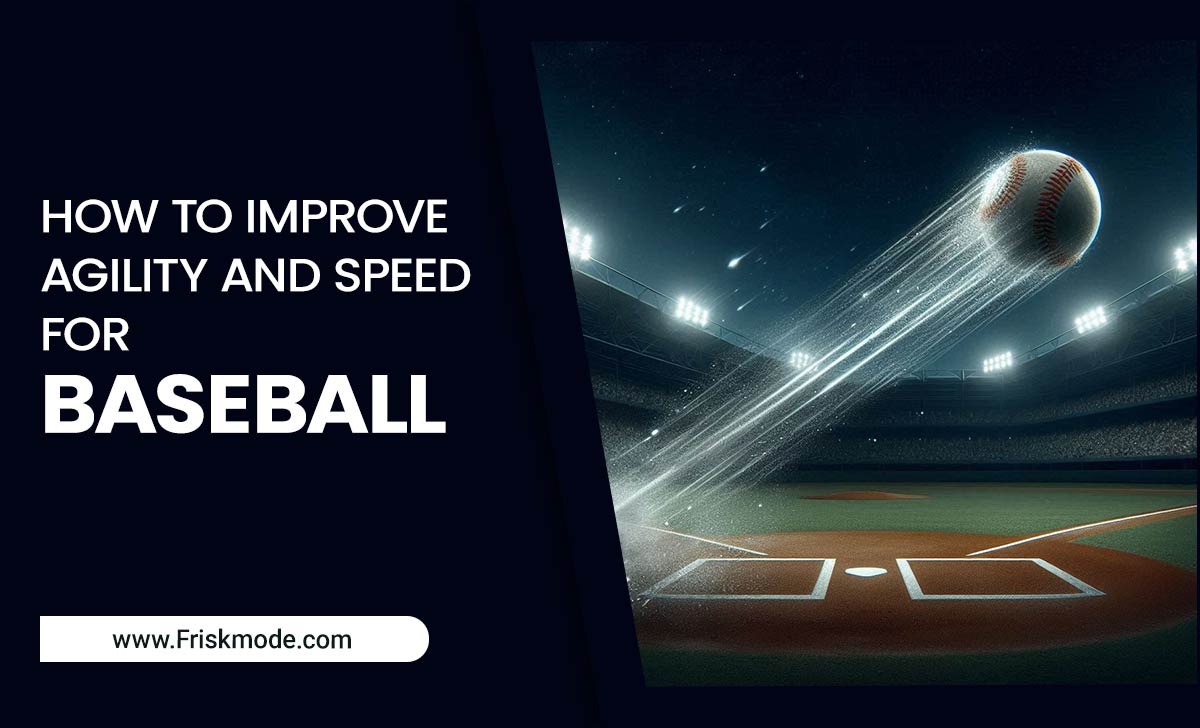Louisville Slugger shin guards offer excellent protection for catchers of all levels, minimizing the impact of foul balls and errant pitches and keeping you in the game longer.
Getting behind the plate is serious business. As a catcher, you’re the field general, the motivator, and often, the one taking the most direct hits. Foul tips, wild pitches, and the occasional dropped third strike can all lead to painful shin bruises. That’s where good shin guards come in. They’re not just an accessory; they’re vital equipment designed to keep you safe, comfortable, and playing your best. We’ll walk through why Louisville Slugger shin guards are a top choice for so many players, what to look for, and how to make sure you’re getting the protection you need.
Why Shin Guards Are a Catcher’s Best Friend
As a catcher, your shins regularly face a barrage of high-impact situations. Fastballs, breaking balls, and foul tips hurt – a lot. Without protection, these impacts can lead to severe bruising, swelling, and even more serious injuries that can keep you out of the game. Shin guards act as a crucial buffer, distributing the force of these impacts away from your vulnerable shins and into the padding, significantly reducing pain and the risk of injury. For beginners, this is especially important as your reactions and defensive positioning are still developing, making you more susceptible to unexpected impacts.
The Louisville Slugger Advantage: More Than Just a Brand
Louisville Slugger is a name synonymous with baseball. For generations, they’ve been crafting equipment that athletes trust. Their commitment to quality extends to their catcher’s gear, and their shin guards are no exception. They’re designed with the catcher’s needs in mind, focusing on:
Superior Protection: Louisville Slugger uses advanced padding and durable outer shells to absorb and deflect impact.
Comfort and Fit: Proper fit is key to any protective gear. Their designs consider a catcher’s range of motion and comfort during long games and practices.
Durability: Baseball is tough on equipment. Louisville Slugger products are built to withstand the rigors of the game.
Player-Centric Design: From youth leagues to the pros, Louisville Slugger incorporates feedback to create gear that performs.
Understanding the Different Types of Louisville Slugger Shin Guards
While Louisville Slugger offers a range of catcher’s gear, their shin guards generally fall into a few categories based on the level of play and specific features. For beginners and intermediate players, you’ll typically be looking at models designed for maximum coverage and comfort.
Youth Shin Guards: Smaller, lighter, and often with simpler strapping systems, these are designed for younger players learning the position. They offer good protection without being overly cumbersome.
Intermediate/Adult Shin Guards: These offer more robust padding, advanced impact dispersion technology, and often more adjustable strapping for a secure fit on adult legs. This is where you’ll find models like the Louisville Slugger Pro shin guards.
Professional-Grade Shin Guards: While many high-end amateur players use these, they are built with the most advanced materials and engineering for maximum protection and performance under extreme conditions. These are often lighter, more breathable, but still offer incredible impact resistance. For the keyword “Louisville Slugger catchers shin guards for men,” you’ll most likely be looking in the intermediate/adult and professional-grade categories.
Key Features to Look for in Louisville Slugger Shin Guards
When choosing your Louisville Slugger shin guards, consider these important attributes to ensure you get the best protection and value:
Padding Material: Look for high-density foam or specialized protective materials that absorb shock effectively. Some advanced models might incorporate gel inserts for enhanced comfort and impact dispersion.
Outer Shell: A durable, hard plastic or composite shell is essential for deflecting direct impacts from fast pitches and foul balls. It should be robust enough to withstand significant force.
Coverage Area: Ensure the shin guards cover the entire shin, extending from the knee down to the top of your shoe. Good coverage also includes protection for the instep of your foot, often called a “toe cap.”
Strapping System: Adjustable straps are crucial for a secure and comfortable fit. Look for secure buckles, Velcro, or a combination that won’t come loose during play. A well-designed strap system prevents shifting, which can lead to gaps in protection.
Ventilation: While protection is paramount, breathability contributes to comfort, especially during long games in warm weather. Some models feature vents or breathable liners to help manage sweat.
Weight: Lighter guards can mean less fatigue, but never at the expense of protection. Louisville Slugger balances protection and weight effectively across their product lines.
A Closer Look at “Louisville Slugger Catchers Shin Guards for Men”
When searching for “Louisville Slugger catchers shin guards for men,” you’re likely targeting adult-sized equipment. These models are built to accommodate a larger frame and handle the higher velocities and forces encountered in men’s baseball leagues. Expect to find features like:
Extended Knee Protection: More substantial knee-wing coverage to protect against pitches that kick high.
Wider Shin Coverage: To ensure no part of the leg is left vulnerable.
Robust Strapping: Designed for secure attachment on adult legs, preventing slippage.
Advanced Impact Dispersion: Technologies specifically engineered to handle the power of adult pitching.
One popular example in this category might be the Louisville Slugger Adult Pro Catcher’s Shin Guards, which aim to provide a professional level of protection for serious players. Remember to check sizing charts provided by the manufacturer and retailers, as “men’s” sizes can still vary.
The Anatomy of a Protective Shin Guard: What’s Inside?
Understanding the layers of a quality shin guard reveals why they are so effective. It’s a combination of materials working together to keep you safe.
Outer Shell: Usually made from high-impact ABS plastic or a similar durable polymer. This is the first line of defense, designed to spread the impact force over a larger area and deflect sharp objects.
Mid-Layer Padding: Beneath the shell, you’ll find a denser foam or EVA (ethylene-vinyl acetate) material. This layer absorbs a significant portion of the shock energy. Think of it like the crumple zone in a car – it’s designed to compress and absorb.
Inner Liner/Comfort Padding: This is the layer that directly contacts your leg. It’s typically made of softer foam or a moisture-wicking fabric. Its primary roles are comfort, preventing chafing, and managing sweat. Some high-end models may incorporate additional gel inserts in this layer for customized comfort and targeted shock absorption.
Straps and Buckles: Durable nylon webbing with strong buckles or Velcro closures. These are engineered to hold the shin guard securely in place without restricting movement or digging into your skin.
A well-constructed shin guard integrates these components seamlessly, creating a protective system that is both highly effective and comfortable enough for extended wear.
How to Properly Fit Your Louisville Slugger Shin Guards
A great shin guard won’t do its job if it doesn’t fit correctly. Here’s a step-by-step guide to getting the perfect fit:
1. Measure Your Leg: The most important measurement is from the middle of your knee cap down to the top of your shoe (where your shoe meets your leg). Manufacturers will typically have sizing charts based on these measurements.
2. Wear Your Catcher’s Equipment: Put on your baseball pants and your catcher’s [baseballEquipment] or shin guard [shinGuard] if you have them already. This ensures you’re fitting the shin guards with the gear you’ll actually be playing in.
3. Position the Guards: Place the shin guards on your legs. The knee cap of the guard should align with your kneecap. The bottom of the shin guard should extend down to cover the top of your foot or instep if it includes a toe cap.
4. Adjust the Straps:
Start with the top strap (near the knee). Tighten it snugly but not so tight that it cuts off circulation or digs in. Ensure the knee wing is positioned comfortably over your kneecap.
Move to the middle strap. Adjust for a secure fit. It should prevent the shin guard from sliding down.
Finally, adjust the lower strap (near the ankle). This helps to keep the bottom of the guard in place and secure the toe cap if applicable.
5. Check for Movement: Stand up, squat down, and move your legs as if you were catching. The shin guards should stay firmly in place without significant shifting or pinching. There shouldn’t be any large gaps where your shin is exposed.
6. Comfort Check: Wear them for a few minutes while standing and moving. Ensure there are no uncomfortable pressure points or areas that rub.
Key Fitting Tips:
Never buy shin guards that are too small or too large, hoping they’ll work.
Ensure the toe cap (if present) protects the entire top of your shoe.
A good fit means you forget you’re wearing them while playing.
Caring for Your Louisville Slugger Shin Guards
To ensure your Louisville Slugger shin guards last as long as possible and continue to provide optimal protection, proper care is essential. Neglecting your gear can lead to premature wear and tear, compromising its integrity.
Here’s how to keep them in top shape:
After Each Use:
Wipe Down: Use a damp cloth to wipe off dirt, mud, and sweat from both the exterior shell and the interior padding.
Air Dry: Always air dry your shin guards completely before storing them. Never put them in a dryer, as excessive heat can damage the plastic and padding.
Unstrap: Loosen the straps to allow air to circulate and prevent them from becoming permanently creased or stretched in a fixed position.
Regular Cleaning:
Mild Soap: For a deeper clean, you can use a mild soap (like dish soap or a gentle laundry detergent) mixed with water. Use a cloth or soft brush to scrub the interior padding and exterior.
Rinse Thoroughly: Ensure you rinse away all soap residue with clean water.
Baking Soda (for Odor): If odors become an issue, lightly sprinkle baking soda inside the shin guards and let them sit overnight. Then, shake them out thoroughly before air drying.
Storage:
Cool, Dry Place: Store your shin guards in a cool, dry place, away from direct sunlight and extreme temperatures.
Avoid Compression: Don’t store heavy objects on top of your shin guards, as this can cause them to warp or crack. Ideally, store them in a gear bag where they are protected but not squashed.
By following these simple steps, you can extend the life of your Louisville Slugger shin guards, keeping them protective and comfortable season after season.
Louisville Slugger Shin Guard Models: A Comparison
While specific models change yearly and by region, we can compare general features you often find in Louisville Slugger’s adult catcher’s shin guards to help you make an informed choice. This table illustrates typical differences based on performance and intended use.
| Feature | Entry-Level/Youth Models | Intermediate/Adult Models (e.g., Pro Series) | Professional-Grade Models |
| :———————- | :—————————————————– | :——————————————————– | :——————————————————- |
| Protection Level | Good coverage, moderate impact absorption | Excellent coverage, high-impact absorption | Maximum impact absorption, strategic reinforcement |
| Padding Density | Standard density foam | High-density foam, multi-layer | Advanced composite materials, gel inserts |
| Outer Shell Material| Durable ABS plastic | Reinforced ABS or composite polymer | Advanced composite, often lighter yet stronger |
| Toe Protection | Integrated toe cap | Robust, articulated toe cap | Superior articulation and coverage |
| Strapping System | Simple Velcro or buckle straps | Multiple adjustable straps, secure buckle system | Ergonomic, highly adjustable, quick-release systems |
| Weight | Lighter, designed for less fatigue | Balanced for protection and mobility | Often lighter without compromising protection |
| Breathability | Basic ventilation | Improved ventilation ports and liners | Optimized airflow, moisture-wicking technology |
| Target User | Young players, beginners | Amateur leagues, competitive youth players, adult league | Elite amateur, college, professional players |
| Price Range | $ | $$ – $$$ | $$$$ |
Note: Specific features and model availability can vary. Always check product descriptions for the most accurate information.
Training Tips for Young Catchers
Beyond having the right gear, proper technique is crucial for young catchers to stay safe and develop effectively. Here are some fundamental training tips:
Stance and Receiving
The Catcher’s Squat: Maintain an athletic, balanced stance with your knees wide, feet shoulder-width apart, and your chest up. Avoid sitting back on your heels. Your “trout mouth” (mitt open) should be ready to receive the pitch.
Receiving the Ball: Frame pitches by bringing your mitt to the ball. Keep your glove steady and “stick” the pitch. Use your body to create a clean target for the pitcher.
Recovery: After receiving the ball, transition smoothly into your next action, whether it’s throwing or preparing for a runner.
Blocking Pitches
Get Big: When a pitch is in the dirt, your primary job is to block it. Get your body in front of the ball and widen your stance.
Hand Position: Keep your glove down and your free hand against the ground, behind the glove, to catch any “bleed through.” This is a crucial safety measure.
Body Angle: Learn to get your chest and stomach over the ball. It’s about sacrificing your body to keep pitches from getting past you.
Throwing and Base Running
Quick Transfers: Practice transferring the ball from your glove to your throwing hand quickly and efficiently. A stationary drill with a partner is a great start.
Footwork: Develop solid footwork for throwing out runners. This involves stepping through towards your target.
* Awareness: Always be aware of runners on base. Understand when to call for time, when to throw, and when to just block.
The Importance of Conditioning
Catching is physically demanding! Incorporate exercises that build leg strength (squats, lunges), core stability (planks, twists), and upper body endurance. Flexibility exercises, especially for the hips and hamstrings, can also improve your range of motion. Check out resources like National Strength and Conditioning Association (NSCA) for general athletic conditioning principles.
Frequently Asked Questions About Louisville Slugger Shin Guards
Here are some common questions beginner players and their parents might have about catcher’s shin guards.
Q1: How do I know if my shin guards are too big or too small?
Your shin guards are too big if they slide down your legs or if there are large gaps where your shin and calf are exposed even when strapped securely. They are too small if they don’t cover your knee adequately or if the toe cap doesn’t properly protect the top of your shoe. Always refer to the manufacturer’s sizing chart and measure your leg from the middle of the kneecap to the top of your shoe.
Q2: Do I really need shin guards if I’m just starting out?
Absolutely! Even beginner leagues can have pitches with surprising velocity, and foul tips happen to everyone. Shin guards provide essential protection against painful bruises and potential injuries, allowing you to focus on learning the position with confidence. They are a fundamental piece of catcher’s equipment for safety.
Q3: Can adult men’s shin guards be used for youth players?
Generally, no. Adult shin guards are designed for larger legs and might be too long, too bulky, or not adjustable enough for a youth player. Using youth-specific shin guards ensures a proper fit and appropriate protection without hindering movement. Always choose gear sized for the player’s age and physical development.
Q4: How often should I replace my shin guards?
Shin guards don’t have a fixed replacement schedule like some other athletic gear. You should consider replacing them if the padding has significantly compressed, the outer shell is cracked or severely damaged, or the straps are no longer secure. If they no longer provide adequate protection or comfort during play, it’s time for an upgrade. Regular inspection of your gear is key.
Q5: Will shin guards make it harder to move around the plate?
When properly fitted, Louisville Slugger shin guards are designed to be streamlined and allow for a full range of motion. While there’s an initial adjustment period, good quality guards shouldn’t significantly impede your ability to squat, block, or field. The protection they offer far outweighs any minor adjustment needed for movement.
Q6: Are there specific Louisville Slugger models recommended for specific positions?
Louisville Slugger makes a wide range of catcher’s gear. While most catcher’s shin guards are designed for the general needs of the position, some specialized designs might offer slightly different features. For someone focused on blocking, maximum coverage and robust padding are key. For a catcher who also needs agility, a slightly lighter model with excellent articulation might be preferred. The “Pro Series” models are generally designed for the highest level of performance and protection across all aspects of a catcher’s duties. For “Louisville Slugger catchers shin guards for men,” you’ll find models optimized for adult league play, offering a balance of protection, comfort, and mobility.





